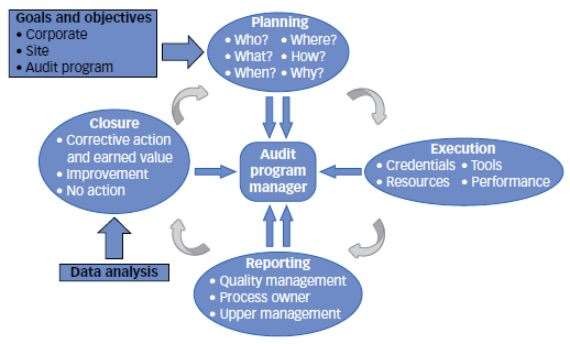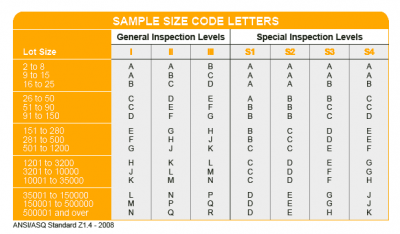SA8000, BSCI, SEDEX(SMETA), WRAP, WCA, RBA, ICTI, APSCA, FLA,FSC, SLCP, Higg FEM
WHAT IS AUDITING?
Quality Glossary Definition: Audit
Auditing is defined as the on-site verification activity, such as inspection or examination, of a process or quality system, to ensure compliance to requirements. An audit can apply to an entire organization or might be specific to a function, process, or production step. Some audits have special administrative purposes, such as auditing documents, risk, or performance, or following up on completed corrective actions.
Read more: Social Compliance Audit: SA 8000, SMETA, BSCI, SLCP, WRAP, RBA
THE THREE DIFFERENT TYPES OF AUDITS
ISO 19011:2018 defines an audit as a “systematic, independent and documented process for obtaining audit evidence [records, statements of fact or other information which are relevant and verifiable] and evaluating it objectively to determine the extent to which the audit criteria [a set of policies, procedures or requirements] are fulfilled.” There are three main types of audits:
- Process audit: This type of audit verifies that processes are working within established limits. It evaluates an operation or method against predetermined instructions or standards to measure conformance to these standards and the effectiveness of the instructions. A process audit may:
-Check conformance to defined requirements such as time, accuracy, temperature, pressure, composition, responsiveness, amperage, and component mixture.
-Examine the resources (equipment, materials, people) applied to transform the inputs into outputs, the environment, the methods (procedures, instructions) followed, and the measures collected to determine process performance.
-Check the adequacy and effectiveness of the process controls established by procedures, work instructions, flowcharts, and training and process specifications.
- Product audit: This type of audit is an examination of a particular product or service, such as hardware, processed material, or software, to evaluate whether it conforms to requirements (i.e., specifications, performance standards, and customer requirements).
System audit: An audit conducted on a management system. It can be described as a documented activity performed to verify, by examination and evaluation of objective evidence, that applicable elements of the system are appropriate and effective and have been developed, documented, and implemented in accordance and in conjunction with specified requirements.
-A quality management system audit evaluates an existing quality management program to determine its conformance to company policies, contract commitments, and regulatory requirements.
-Similarly, an environmental system audit examines an environmental management system, a food safety system audit examines a food safety management system, and safety system audits examine the safety management system.
- Audit Considerations
- Other methods, such as a desk or document review audit, may be employed independently or in support of the three general types of audits.
- Some audits are named according to their purpose or scope. The scope of a department or function audit is a particular department or function. The purpose of a management audit relates to management interests, such as assessment of area performance or efficiency.
An audit may also be classified as internal or external, depending on the interrelationships among participants. Internal audits are performed by employees of your organization. External audits are performed by an outside agent. Internal audits are often referred to as first-party audits, while external audits can be either second-party or third-party.
WHAT ARE FIRST-PARTY, SECOND-PARTY, AND THIRD-PARTY AUDITS?
- A first-party audit is performed within an organization to measure its strengths and weaknesses against its own procedures or methods and/or against external standards adopted by (voluntary) or imposed on (mandatory) the organization. A first-party audit is an internal audit conducted by auditors who are employed by the organization being audited but who have no vested interest in the audit results of the area being audited.
- A second-party audit is an external audit performed on a supplier by a customer or by a contracted organization on behalf of a customer. A contract is in place, and the goods or services are being, or will be, delivered. Second-party audits are subject to the rules of contract law, as they are providing contractual direction from the customer to the supplier. Second-party audits tend to be more formal than first-party audits because audit results could influence the customer’s purchasing decisions.
- A third-party audit is performed by an audit organization independent of the customer-supplier relationship and is free of any conflict of interest. Independence of the audit organization is a key component of a third-party audit. Third-party audits may result in certification, registration, recognition, an award, license approval, a citation, a fine, or a penalty issued by the third-party organization or an interested party.
Industry Certification Through Auditing
Companies in certain high-risk categories—such as toys, pressure vessels, elevators, gas appliances, and electrical and medical devices—wanting to do business in Europe must comply with Conformité Europeënne Mark (CE Mark) requirements. One way for organizations to comply is to have their management system certified by a third-party audit organization to management system requirement criteria (such as ISO 9001).
Customers may suggest or require that their suppliers conform to ISO 9001, ISO 14001, or safety criteria, and federal regulations and requirements may also apply. A third-party audit normally results in the issuance of a certificate stating that the auditee organization management system complies with the requirements of a pertinent standard or regulation.
Third-party audits for system certification should be performed by organizations that have been evaluated and accredited by an established accreditation board.
Performance Audits vs. Compliance and Conformance Audits
Value-added assessments, management audits, added value auditing, and continual improvement assessment are terms used to describe an audit purpose beyond compliance and conformance. The purpose of these audits relates to organization performance. Audits that determine compliance and conformance are not focused on good or poor performance, yet. Performance is an important concern for most organizations.
A key difference between compliance audits, conformance audits, and improvement audits is the collection of evidence related to organization performance versus evidence to verify conformance or compliance to a standard or procedure. An organization may conform to its procedures for taking orders, but if every order is subsequently changed two or three times, management may have cause for concern and want to rectify the inefficiency.
Follow-Up Audits
A product, process, or system audit may have findings that require correction and corrective action. Since most corrective actions cannot be performed at the time of the audit, the audit program manager may require a follow-up audit to verify that corrections were made and corrective actions were taken. Due to the high cost of a single-purpose follow-up audit, it is normally combined with the next scheduled audit of the area. However, this decision should be based on the importance and risk of the finding.
An organization may also conduct follow-up audits to verify preventive actions were taken as a result of performance issues that may be reported as opportunities for improvement. Other times organizations may forward identified performance issues to management for follow-up.
WHAT ARE THE FOUR PHASES OF AN AUDIT CYCLE?
- Audit planning and preparation: Audit preparation consists of planning everything that is done in advance by interested parties, such as the auditor, the lead auditor, the client, and the audit program manager, to ensure that the audit complies with the client’s objective. This stage of an audit begins with the decision to conduct the audit and ends when the audit itself begins.
- Audit execution: The execution phase of an audit is often called the fieldwork. It is the data-gathering portion of the audit and covers the time period from arrival at the audit location up to the exit meeting. It consists of multiple activities including on-site audit management, meeting with the auditee, understanding the process and system controls and verifying that these controls work, communicating among team members, and communicating with the auditee.
- Audit reporting: The purpose of the audit report is to communicate the results of the investigation. The report should provide correct and clear data that will be effective as a management aid in addressing important organizational issues. The audit process may end when the report is issued by the lead auditor or after follow-up actions are completed.
- Audit follow-up and closure: According to ISO 19011, clause 6.6, “The audit is completed when all the planned audit activities have been carried out, or otherwise agreed with the audit client.” Clause 6.7 of ISO 19011 continues by stating that verification of follow-up actions may be part of a subsequent audit.

The Four Phases of an Audit Cycle
Note: Requests for correcting nonconformities or findings within audits are very common.
Corrective action is action taken to eliminate the causes of an existing nonconformity, defect, or other undesirable situation in order to prevent recurrence (reactive).
Corrective action is about eliminating the causes of problems and not just following a series of problem-solving steps.
Preventive action is action taken to eliminate the causes of a potential nonconformity, defect, or other undesirable situation in order to prevent occurrence (proactive).
Free Sample Report Performance Quality Control
Download a sample report to keep control of your supply chain!
Featured Articles
 AQL Table | How to Read It
AQL Table | How to Read It TOP 10 Common Defects in Garments Quality Inspection
TOP 10 Common Defects in Garments Quality Inspection Product Packaging and Shipment Label requirements for Amazon FBA
Product Packaging and Shipment Label requirements for Amazon FBA What Is ASTM-F2413-18? Protective Footwear Standard
What Is ASTM-F2413-18? Protective Footwear Standard How to Conduct Third-Party Quality Control Inspections for Electric Scooters
How to Conduct Third-Party Quality Control Inspections for Electric Scooters SMETA Audit-What is SMETA Audit?
SMETA Audit-What is SMETA Audit? TESTCOO Supplier Verification/Certification Service SLCP, Higg FEM, GRS, GOTS
TESTCOO Supplier Verification/Certification Service SLCP, Higg FEM, GRS, GOTS Quality Control Inspection Company in China
Quality Control Inspection Company in China What is Quality Inspection? A Complete Guide
What is Quality Inspection? A Complete Guide Guidelines for Product Inspection in India
Guidelines for Product Inspection in India
Category
- Production Inspection Service
- Factory Audit
- Softline Inspection
- Hardline Inspection
- Electrics Inspection
- Certification
- Checklist
- Manufacturers
- Quality Assurance Basics
- Products Recall
- AQL
- Guidence and Standard
- News
- Supplier Management
- Amazon
- Protective Equipment
- e-commerce quality control
- Indian Manufacturing
- Soft Goods Quality Control
- Supply Chain Management
- Supply Chain Resilience
- E-Commerce Quality Control
- ISO 2859
- Supply Chain Optimization
- Garment Industry
- Higg Index



